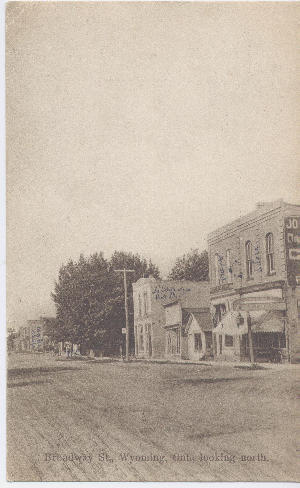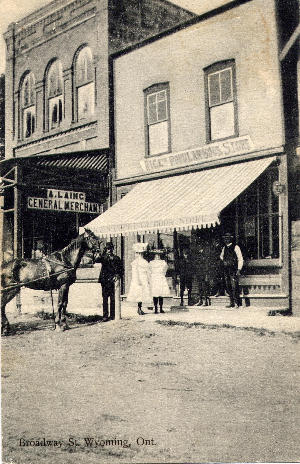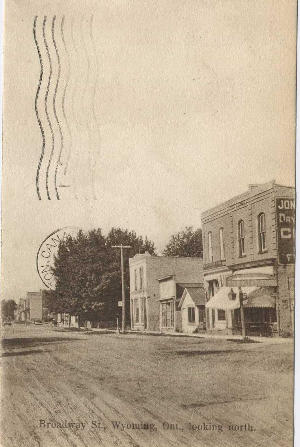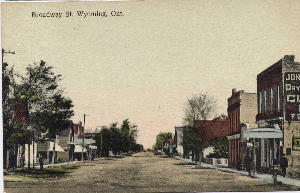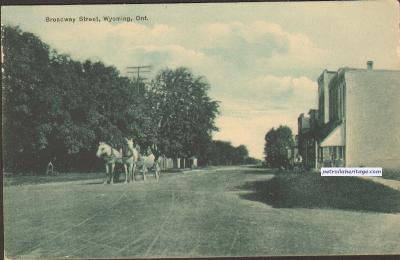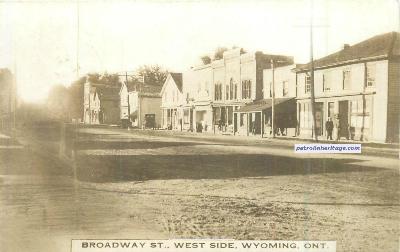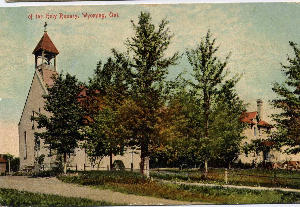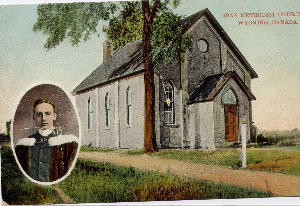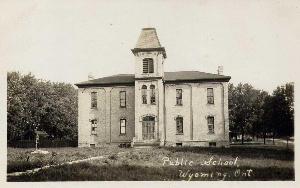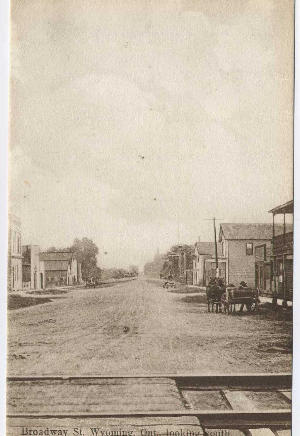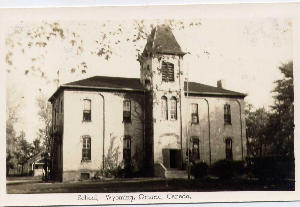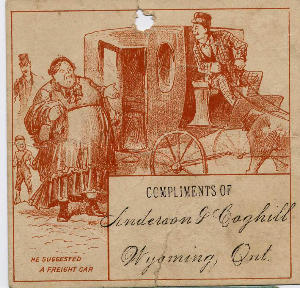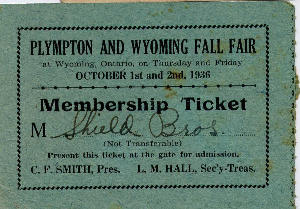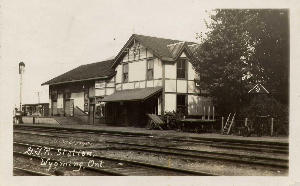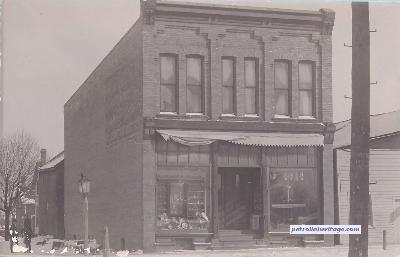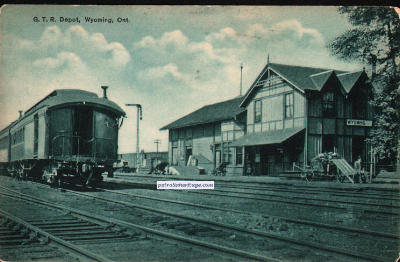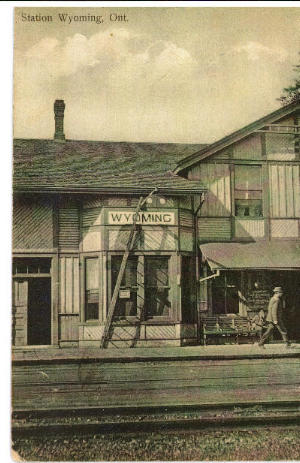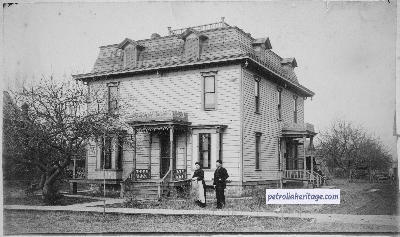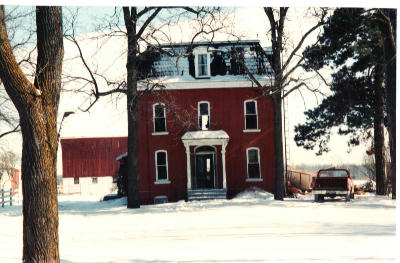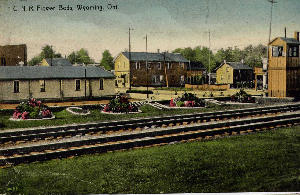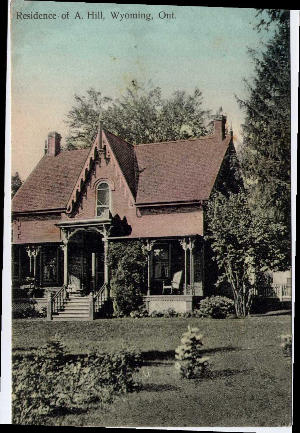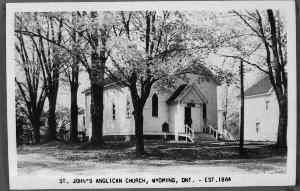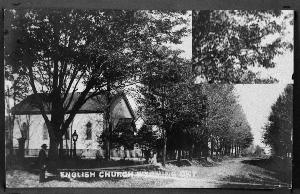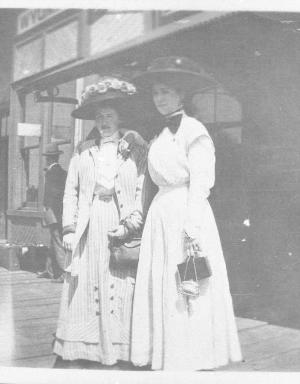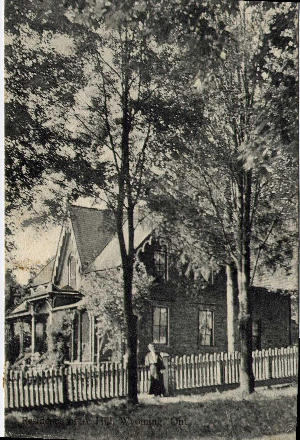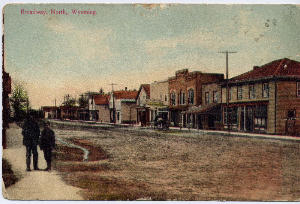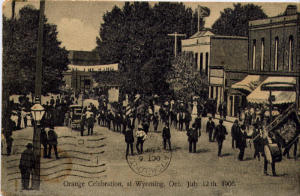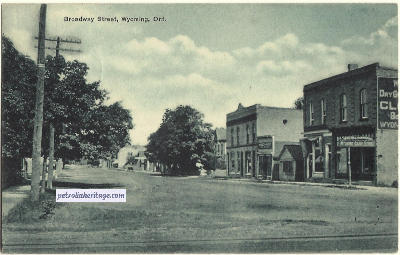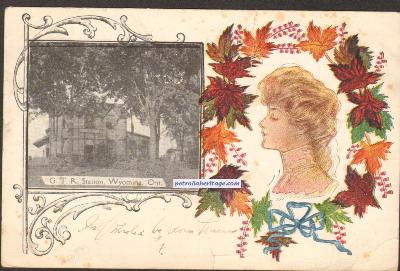|
This item ran in the
Petrolia Topic May 9/07 and we thought it was
a good story for the Wyoming page.
Speaker:
Dutch immigrants saw this region as mini
Netherlands
By JOHN PHAIR
The
Dresden Leader
One might wonder why a guy named Campbell,
who lives in a town with an Anglo name like
Petrolia, would have such an interest in
post-Second World War Dutch history.
Joel Campbell is a Petrolia councillor and
LCCVI English teacher and was guest speaker at
the regular meeting of the Dawn Township
Historical Society.
He explained that along with his Scottish
roots, his mother's maiden name was Wilpstra
and that side of his family came to Canada
from the Netherlands in 1948.
Another reason for his abiding interest in
Dutch history, he suggests, may have something
to do with the fact he grew up in Wyoming.
With 17 per cent its population either Dutch
immigrants or the offspring of Dutch
immigrants, he says that makes it the second
most Dutch town in Canada.
"When you live in a small town and attend a
Christian Reformed Church and a Christian
school, you are immersed in a very Dutch
Canadian culture," he said, adding he wrote
several papers on the subject while attending
the University of Western Ontario where he
received an MA in public history.
"I wanted to know more about my Dutch
heritage, not only in a local sense but about
things that were personal," he said.
"I wanted to look at the role Canadians played
in liberating Holland and what it was that
prompted my grandparents and so many like them
to come to Canada."
Campbell said a spirit of friendship between
Canada and the Netherlands developed during
the Second World War.
He noted that during the Second World War, the
Dutch Royal family fled to England at first
and later, princess Juliana, who would later
become Queen, moved to Canada.
While there, she gave birth to a daughter,
Princess Margarette, in an Ottawa hospital.
Through an act of Parliament, the Canadian
government declared the hospital room was on
Dutch soil so it could be said the princess
was born on Dutch territory.
"There was a fascinating relationship
developed and every year since, the
Netherlands sends tulip bulbs to Canada in
recognition of the favour the Canadian
government did for them," he said.
He also noted Canada's involvement with the
Netherlands escalated in 1944 when following
the D-Day invasion of Europe, Canada's second
and third divisions were given the task of
liberating Holland from the Nazis, a task it
completed by May 5, 1945, three days prior to
Victory-Day in Europe.
He noted the Canadian troops did not pull out
right away and consequently many of the
soldiers became enamoured with Dutch girls.
"Canada was looked upon as a desirable country
and Canadians appeared to be healthy and good
people to the Dutch," he said.
Consequently, the first wave of Dutch
immigrants to Canada was largely made up of
war brides and their children and numbered
1,886 in 1946.
"They were the first group of post-war Dutch
immigrants," he said.
Campbell said while researching citizenship
and immigration records at university, he
started to notice there was an explanation of
what brought so many Dutch immigrants to
Ontario and particularly to, what he calls,
the "four counties" region of Lambton, Kent,
Middlesex and Elgin Counties.
He noted more than 200,000 Dutch immigrants
have come to Canada since the end of the
Second World War, with the majority — 120,000
or about 60 per cent — arriving in a 10-year
window from 1946 to 1956.
Of those numbers, he said 10 per cent settled
in the Maritimes, 34 per cent went to the
Western provinces of Manitoba, Saskatchewan
and Alberta.
But the majority, fully 55 per cent, settled
in southwestern Ontario, with the majority of
those opting to live in the four-county area.
Campbell said there are two reasons for that:
one being cultural.
But the largest factor by far, he says, is
geographical.
"Southwestern Ontario had something the rest
of the country did not; the beginning of Dutch
churches that had been started by a wave of
Dutch immigrants following the First World
War," said Campbell.
"Canada was attractive to them not only
because there were jobs here but because there
was also some type of cultural framework in
that there were churches and other Dutch
people here."
However, he said the larger reason was
geographical, pointing out the area is highly
similar of the Netherlands in terms of
climate, growing conditions and the wide range
of soil types prevalent in the area.
"The land here is the same range of sand, loam
and clay found in the Netherlands," he said.
In addition, he noted the drainage system is
similar as well.
"In the Netherlands, the land is drained into
the ocean while in Southwestern Ontario, it is
drained into the Great Lakes
. . . the Dutch people felt right at home
working this land and growing essentially the
mix of crops grown in Holland."
Campbell noted most of the Dutch immigrants
came as farm labourers and it took many years
of hard work before they owned their own
farms.
However, there was one industry prevalent in
Lambton and Chatham-Kent that assisted many
along that route, that being the sugar beet
industry.
"Many Dutch immigrants worked in the sugar
beets and many of the women were employed in
the processing plants bagging sugar and sewing
the cloth sugar bags," he noted.
However, Campbell said inspite of their
obstacles and personal struggles, the Dutch
successfully transplanted themselves and set
down deep roots from which their family trees
have grown and continue to thrive.
"So when you go out in the community and
wonder what it was that attracted large
numbers of Dutch to Lambton and Chatham-Kent,
just consider this was the most comfortable
alternative, it was geographically and to a
limited extent, socially, a miniature of the
Netherlands," said Campbell.
|

